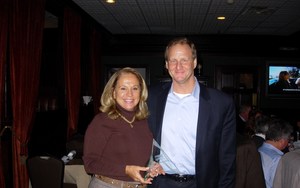Like most of you, my firm is still in recovery from a very bad economy. Looking back over the past 24 months, we’ve been reflecting on what we’ve done that has worked for us that might provide insights for the future.
It’s likely that you, too, are reviewing your business to decide what changes to make to improve your business as recovery moves forward. This month, we’ll look at several key areas: sales, marketing, the business process and overall operations.
Creating Sales
Let’s start with sales: What have you done to create more sales? Lower your price, find less expensive products to sell, look for other areas of remodeling to offer to your clients? How do you go to market when it comes to sales?
Is there a process in place for how you handle your customers, or is it every man for himself?
If you have no process or objective when a customer calls or comes into your showroom, you will have less opportunity to sell to them. That’s because today’s customers have done Internet research and often think they know everything about our business that they need to know.
The Internet is a great thing, but it can also create many problems for the kitchen and bath dealer. There are products for sale for a fraction of what we buy them for. That can be overwhelming when we try to explain to our customers why and how we can do a better job for them.
There are training courses for the front-line people in our business, but sadly few ever take advantage of them. There are NKBA programs, buying groups’ educational conferences and vendor training seminars, yet many in our industry ignore these because they are “too busy” or “have no money for that sort of thing right now.”
How would you feel if you found out that your doctor has not had any additional training in his field since he received his degree? You might wonder how he stays up to date with all of the new things that are out there. The same is true for our industry. There are new products, new ways of selling, new studies that look at the psychology of selling and why customers buy.
In challenging times, we need these tools to help us grow our sales and profits. We’ve all seen companies close the doors after being in business for many years, and we wonder what happened to them. Were they blind to what was going on? Were they prepared for a business slow down? Were they already out of business and didn’t know it?
Whatever the case may be, we all need to explore other ways of doing business by being smarter and leaner. When we look at how we used to do things, do we question what’s new on the horizon?
Marketing Efforts
Your marketing efforts will be critical to your continued success. In my own business, I always liked to do my own marketing, but the kitchen and bath industry is changing. The Internet, social media and other changes in how marketing is done have proven that what we did two years ago or 10 years ago is not going to work for the future.
I used to believe that hiring outside help to assist in our marketing was an unnecessary expense. But I’ve since come to realize that it really does not cost us money to have such a person or agency, as good marketing pays for itself.
Someone who learns about your industry and about you and your company can go a long way toward allowing you to do what you do best: selling, designing and managing your company.
Just as homeowners who think they can design their own kitchen or bath fail to recognize the value of hiring a professional kitchen and bath firm, those of us who want to handle all of our marketing functions may be missing the mark.
Marketing and advertising professionals can generally get better buys on advertising, better placements for ads, or better times for radio, local network television or cable than we could ourselves. Why is this? It’s for the same reason that people come to you for kitchens and baths. You know your business. And they know theirs.
The bottom line is that we need customers to call our phones and come into our showrooms. We need to set ourselves apart from our competition and the right marketing and advertising people can help get that done.
The Process & Operations
Next, it’s important to address your business process. What do you do when a customer comes in and says those magic words: “We want to remodel?”
What we used to do was put them through an exercise of answering lots of questions. Now, qualifying prospects is still important, but because of the new competition out there – competition that ranges from Internet sites that sell products to builders who now claim to be kitchen and bath experts to home centers and Direct Buy – we need to readjust our thinking.
We’ve always worked on design retainers and have done very well with them. We also find that, upon qualifying the prospect, it’s a good idea to make an appointment to go see them in their home. While it might seem easier to have the client bring measurements so you can create a bid in your office, taking the time to go and see the space assures the client that you are giving their kitchen or bath the personal attention it deserves. It also allows you to speak to the clients in their home environment, where they are more likely to open up about the issues they have with their current space, and their needs, wants and desires for a remodel.
While you may handle many kitchen and bath projects, for your client, his or her project is the only one that counts. That’s why personal attention is so important. We’ve seen projects sold during the home visit for just this reason.
Beyond your basic business process, examine your overall operations to make sure they make sense for today’s economic climate. Revisit your agreements and decide how detailed they do – or don’t – need to be. I’m amazed by what consumers will sign concerning agreements. A one-page agreement with little detail about the project is all that some need to feel okay about a purchase of a new kitchen or bath.
Another area to look at is your installation processes. If you’ve been doing this in house, now may be the time to outsource all of this. If you have in-house installation crews, there may be a tremendous savings to be had by outsourcing.
Take a hard look at your entire operation and see if there isn’t a way to add profits, reduce overhead and enjoy the business a little bit more.
Lukejohn Dickson is the president and CEO of Savannah Kitchen & Bath, Savannah Closet Company, and DC4 Design, which he founded in 2004. He brings 15 years of design and aesthetic know-how to the design community. Dickson’s background includes industrial design, interior design, exhibit design, furniture design, e-commerce development, publishing and fine art.










 Shaker door styles, such as this design from O’Neil Cabinets, are going strong. The company provides custom-grade product lines in a variety of styles and finishes. For more details
Shaker door styles, such as this design from O’Neil Cabinets, are going strong. The company provides custom-grade product lines in a variety of styles and finishes. For more details This elegant kitchen from Huntwood Cabinets features stacked wall cabinets, glass doors, rich raised panel doors, classic crown moldings, and a prominent island with built-in wine cubbies. Photo: Alan Bisson
This elegant kitchen from Huntwood Cabinets features stacked wall cabinets, glass doors, rich raised panel doors, classic crown moldings, and a prominent island with built-in wine cubbies. Photo: Alan Bisson Clean lines and open spaces define this Houston kitchen designed by Cheryl Carpenter featuring Poggenpohl Teak Décor Lava eco-friendly cabinetry, a textured dark grey laminate. Photo: Miro Dvorscak
Clean lines and open spaces define this Houston kitchen designed by Cheryl Carpenter featuring Poggenpohl Teak Décor Lava eco-friendly cabinetry, a textured dark grey laminate. Photo: Miro Dvorscak Thermador’s Masterpiece Series 36-in. Silver-Mirrored Induction Cooktop uses exclusive component technology that is as responsive as gas and as convenient as electric. Photo:
Thermador’s Masterpiece Series 36-in. Silver-Mirrored Induction Cooktop uses exclusive component technology that is as responsive as gas and as convenient as electric. Photo:  DuPont Zodiaq quartz surface in Bianco Carrara. Part of the OKITE collection, Bianco Cararra features a white stone with gray veining. Photo: Shadowlight Group
DuPont Zodiaq quartz surface in Bianco Carrara. Part of the OKITE collection, Bianco Cararra features a white stone with gray veining. Photo: Shadowlight Group Inspired by the delicate scallops of a seashell, Delta’s Addison Bath Collection in chrome finish brings a fresh, inviting look to the bath. Photo: Delta Faucet Company
Inspired by the delicate scallops of a seashell, Delta’s Addison Bath Collection in chrome finish brings a fresh, inviting look to the bath. Photo: Delta Faucet Company













